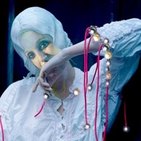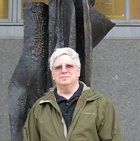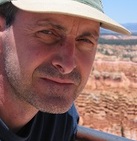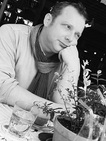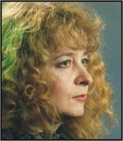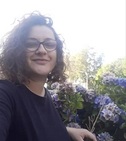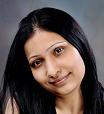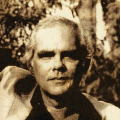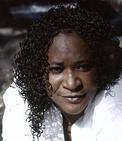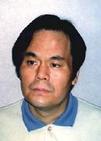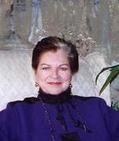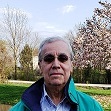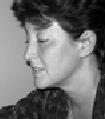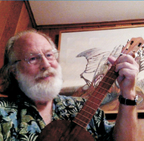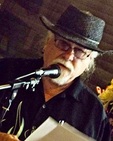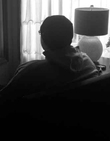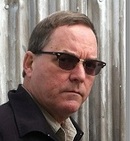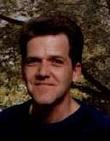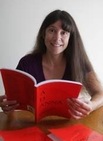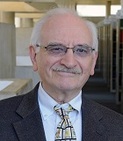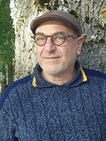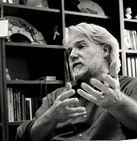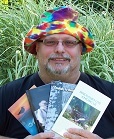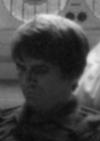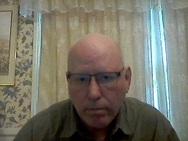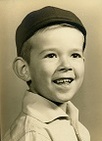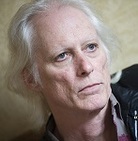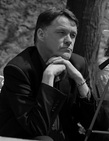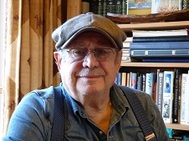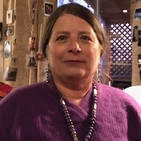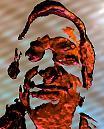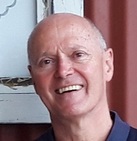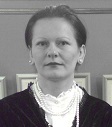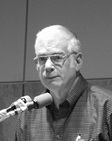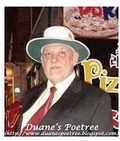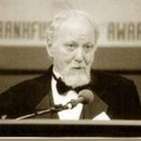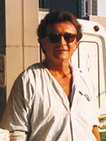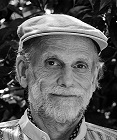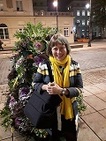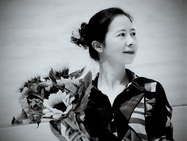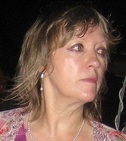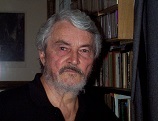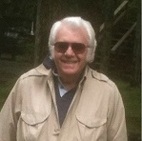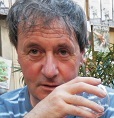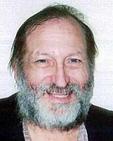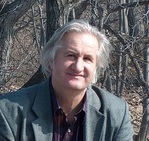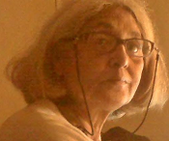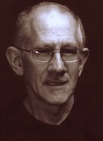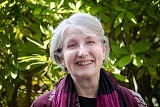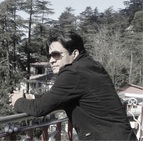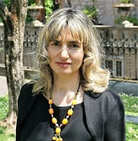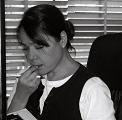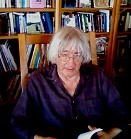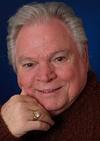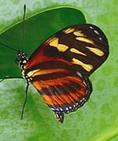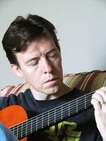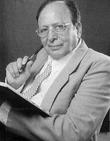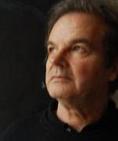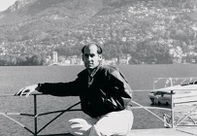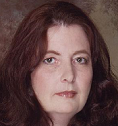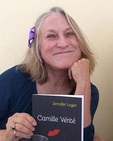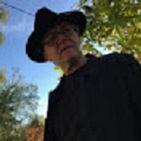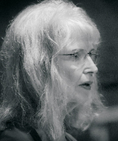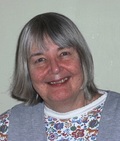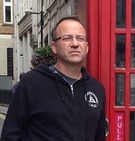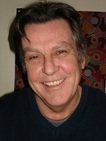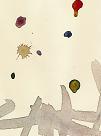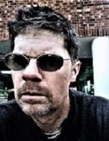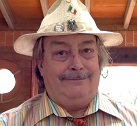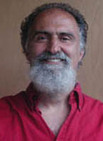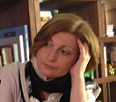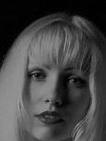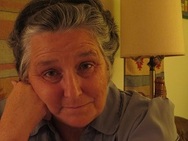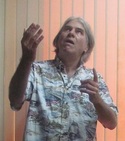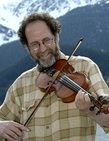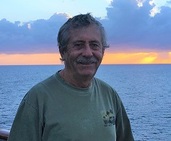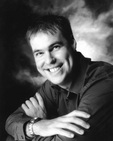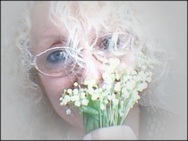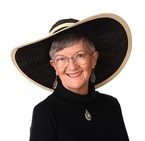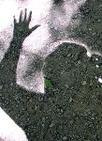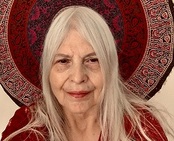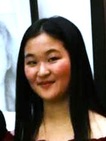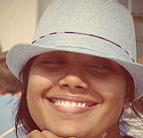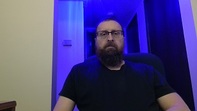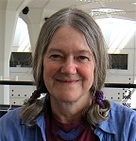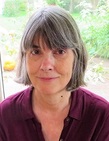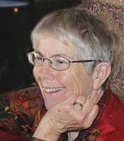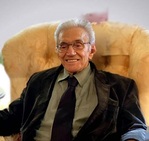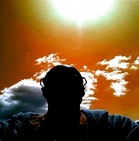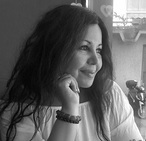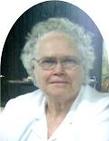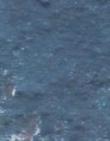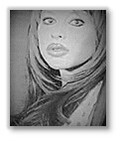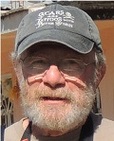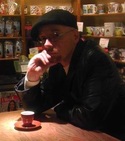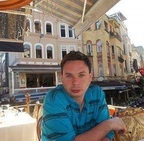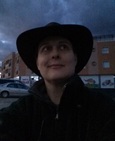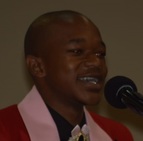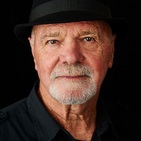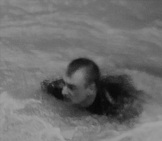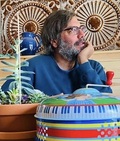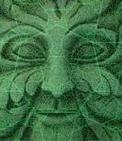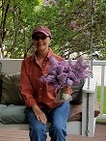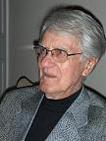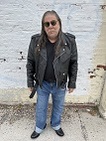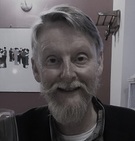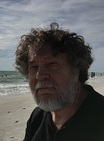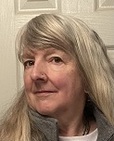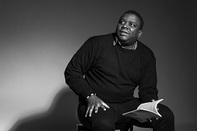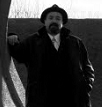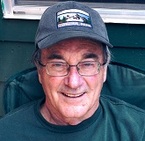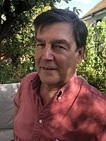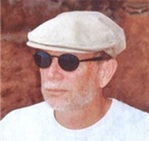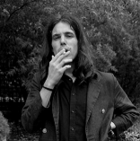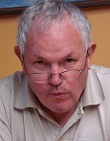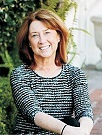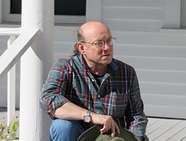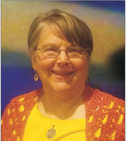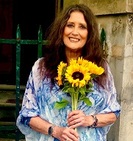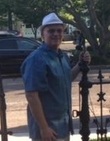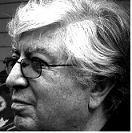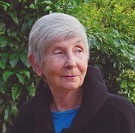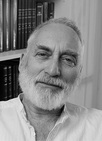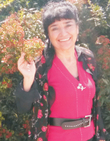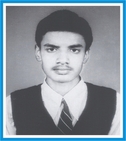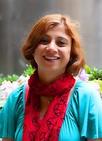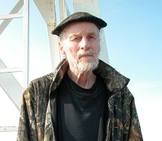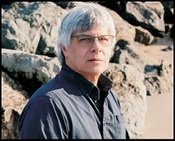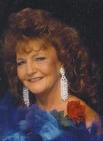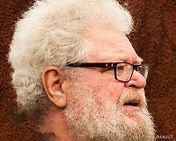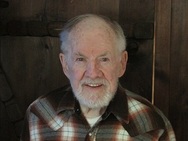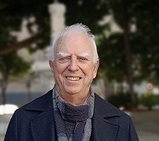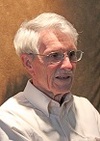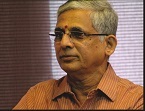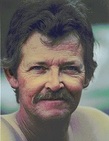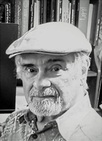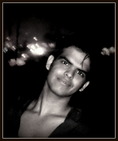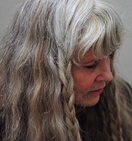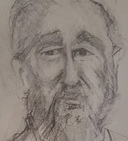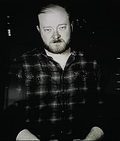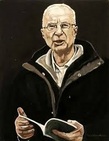Crazed by the Sun, by 2008, by Lynn Strongin, ISBN: 978- 81-8253-112-3, pp. 128, Cyberwit.net
| Crazed by the Sun, by 2008, by Lynn Strongin, ISBN: 978- 81-8253-112-3, pp. 128, Cyberwit.net |
All of us yearn for instances of ecstasy, what editor Lynn Strongin calls “luminous moments” In a tangled and often difficult world, we hope not merely for respite, but for experience that lifts us beyond frustration and fear and rage. In her introduction to this anthology, Strongin describes ecstasy as “at the highest end of a spectrum of pleasure at whose lower end is contentment and in between are various stages of joy, bliss, rapture.” The poems she has assembled illustrate all of these stages, as well as the opposite for, as she points out “no light is possible without darkness.” And light is essential, whether it be the sudden light of epiphany or what poet Charles Wright calls “altar light.” She exalts both light and ecstasy as they have been used throughout the ages and in all kinds of human experience, ranging from sex to doo-wop to carnival rides to children playing. Although the poems here are contemporary, in her introduction she quotes Donne, Vaughn, Dickinson, and others. “To recapitulate the themes of Crazed by the Sun, altar light makes earth holy.” This statement seems to be her mantra for this collection, which intertwines ecstasy with light and breath. Her introduction begins w/ the opening lines of E.E. cummings “i thank You God for most the amazing day,” surely one of the most exultant poems of the twentieth century. The introduction ends with the second quatrain of the cummings poem: (i who have died am alive again today, and this is the sun’s birthday; this is the birth day of life and love and wings: and of the ga great happening illimitably earth) The sixty-five poems in this anthology are grouped into five sections. Part One, “most this amazing day,” centers on amazing days marked sometimes by rapture, sometimes by darkness, sometimes by a blend. Theodore Roethe’s “Child on Top of a Greenhouse” gives us the pure delight of a child who, by making his dangerous way to the top of a glass roof, close to rushing clouds and tossing elms, exults as all the adults below him are “pointing up and shouting.” Liam Rector writes not of day, but of a memorable evening marked by loveliness and passion. “The Night the Lightning Bugs Lit Last in the Field, Then Went Their Way” vividly portrays hundreds of fireflies “lighting their last night,” even as he and his companion make love. In Di Brandt’s “Deep Sky & Sun” the ecstasy resides in warm memory as the narrator recalls herself in a barn, the youngest who watches her companions climbing to the loft: i couldn’t reach the first rung so i stood at the bottom & imagined what heaven was like was my grandfather with Santa Claus beard sitting on a wooden throne among straw bales never saying a word but smiling & patting us on the head & handing out bubble gum to those who were good even though his eyes were half closed he could see right inside your head Enjoying the scent of new-mown hay, pressing tiny blue flowerets against her nose she “breathed / deep sky & sun it was enough heaven for me / for one day” Other poems are more ambivalent. Chase Twichell’s “Little Snowscape” describes snow as both beautiful “Godlike glitter” and that which conceals beauty (“shadow flakes / darken the falling air”) or truth (“white concealment / my lies to myself.) Marianne Moore’s “Sun”also combines light with darkness. Beneath the title is an unattributed epigram, “Hope and fear accost him.” The opening lines quote an ancient (unattributed) poem: “No man may him hyde / From Deth hollow-eyed,” then adds, in Moore’s words, “For us, this inconvenient truth does not suffice.” (One has to wonder, did Al Gore get the title of his study of global warming from this line?) In the remainder of the poem, the sun is portrayed both as splendor--”a fiery topaz”--and as “consuming wrath.” One of the most moving poems in this section is Charles Adés Fishman’s “A Child’s Tale” II August 6, 1945,” set on that day when the first atomic bomb fell on Hiroshima. The first lines describe an innocent, lovely time, when “a cool breeze blew under the gingko trees, and the cicadas / [were] newly emerged from their shelter in the earth” Then comes the moment that changed the world: . . something warm brushed your cheek as if the hot August sun had been reflected off a mirror and Tsutsuga Village trembled A column of pink clouds rose above the mountains rose higher deepening in the intensity of color: all the pink in the universe had been swept up into these clouds
Later, the light darkened and papery cinders fell from the sky thin slivers of scorched wood curled scrapings of metal bits of bone and skin — these, too, rained down Fishman expertly moves from peace to pain honestly, but without moving into melodrama. The ugly facts speak for themselves. Part Two, “Washing Down Noodles with Port” gathers poems that celebrate sensuality. Some center on food. Jonathan Minton’s “Still Life with Orange Bowl” is perfectly named, but this still life provides taste and meditation as well as vivid visual images. Barbara Crooker’s “Eggplants,” “start as purple stars in a deep green firmament, / swell into fullness as the summer sun fills / July afternoons.” Then the blooms become “white hot, washing / the blue right out of the sky.” Penelope Weiss’s prose poem, “The Wasp and the Pear,” opens with sexual imagery: The wasp was a brawny creature with study wings and a sensitive face. His eyes were large and luminous. He nuzzled the pear as she lay open on a plate. Her sigh was too soft to be heard by human ears. Other poems commemorate events, always with powerful images and metaphors’ for example, Robert McNamara’s “At the Campo Dei Fiori”: Lit by the sky’s blue flame a rooftop cannon fires noon, a market fills the square with transubstantiated light – the bloodshot oranges glare, the strawberries’ boxed fire, Jim Natal’s “D.U.I” wittily plays with the expectations aroused by its title : Driving under the influence of a tequila moon I’m pulled over by the night; high desert starlight instead of city stars obscured by light, the mesas stark against a Pollock spattered dropcloth sky In Glenna Luschei ‘s “Fires at the Station,” after twelve short but vivid stanzas depicting the crash of a marriage, she moves beyond anger and sadness to affirmation: Light me the fires at the station we’ll dance in Petersburg. The time between Christmas and New Year’s I’ll wind a week-long nest. We’re all emigrants. Nothing is loss when you dance. “We’re all emigrants.” Indeed! Part III, “The world was stained glass” has to do with darkness as well as light. In Kate Daniels “The Hatching,” the narrator is one of twins burning with scarlet fever. After giving them shots, the doctor brings in a recording, one of “Nutcracker Suite”; under the spell of the music, the narrator sees herself suddenly as “the black swan / hatching in a nest of white, the dark hum/ of music in a small tight place that resists / giving way until the final moment. Then it shudders/ apart in an orgy of exit, and the shell--the shell cracks open.” Such a brilliant metaphor for the sudden turning from illness to health! Jean Sprakland’s “The Light Collector” centers on another kind of unwellness. A man moves glumly through his day thinking “I must make something of my life , as if it were / a bag of rags for recycling.” Seeking some light that will diminish his darkness, he considers broad daylight, but he... “can’t get excited any more by the tawdry brilliance of it . . . . Gauzy scraps of dawn/ have begun to bore him.” He yearns for “bites” of light, and finally opens the refrigerator door to find that “the light is so sweet and precise it leaves him aching.” I’ve never seen a more precise picture of depression. “Aura” Jordan Smith acknowledges that while he has had brief “Blakean implosions” of light in his life, he never saw that broken- / Spectrum’s flourish of energy, of delight.” Finally, unbidden, his purest experience with light comes “On this perfectly ordinary, partially / Cloudy spring afternoon, in the living room” where his boys are listening to the Beatles. “I stood and rubbed the young one’s head / As he joined the older one on air guitar. / When I stretched out my own hand, and there / Was hardly an interruption in our common air.” The most exultant poem in this section is C.E.Chaffin’s “At the Carnival,” in which the narrator brings us into the pure pleasure of a day dedicated to pure pleasure. On the Swinger, he tells us, “I close my eyes, / lean back, go limp and let / my long frame hang like spaghetti / beneath the pirate moon.” Then, “three corn-dogs later,” he and his companion board the Tilt-A-Whirl, in which “We orbit the vortex / of our little track, our feet sucked centerward.” I feel dizzy reading these lines--a joyous dizziness. In Part 4 “Deep in My Comforter” (“From the Birth of Light to the Death of Darkness”) we are given two poems from Laura Chester’s “Free Rein,.” If these are typical of her work, she is giving both mind and heart “free rein” to explore anything, everything with no regard for rules or logic. The first, “Go Round,” is a prose poem comprised of a long series of brief short sentences and phrases, many apparently disconnected, like the visions appearing in a dream, drug-induced fantasy, or a vision: We sing to leap the last of it. The nuts are gathered in a cup. The arc is scent, the curve a boat. To row and row the blinding stream. We hope to cast a shadow yet. Because it is written as prose, we may miss the fact that she includes a good deal of rhyme (or off-rhyme); for example, in the preceding sample, “it” “boat,” “yet.” Further along, Sinking deep in Lions mane. Go round she say to sign your flame. Seven stars are shining bright. The round is fine--Just out of sight. The second, “Returning to the World” is also a prose poem, though the phrases and sentences seem less random and are gathered into five stanzas (or paragraphs?) A brief excerpt, demonstrating Chester’s dip into philosophy via metaphor: I tightened up on the reins of life itself until my hands ached as if from a horse ride. But we know the fingers were just too eager to take, that conscience doesn’t want you to cheat one bit and that life is constant in its demand for you to give. You cannot control The World. Jordan Smith’s “Route 29” also gives us a catalogue of images, but they are less random, more cohesive The poem ends, How still it is, how certain In reflection, although below the abutment Of the trestle bridge the state tore down The waters of West Canada Creek, All sun-broken glitter, let nothing past their own Self-gratifying presence, no hint of how those sudden Depths beyond the shoal might matter to the unwise Fisherman’s footing, no trace of his steps, his works, and no Telling why this world is so beautiful We cannot equal it, we cannot live in it for long. These poems as well as others in more traditional form all lead us into the center of rapturous moments. From Hilda Raz’s “Tenor Part”: learn, croons the garden from its fringe of weeds, Lamia stretched over the brick walks,/ the Periwinkle fine mat strangling Lilies-of-the-Valley Aracelis Girmay’s “Invocation” also a free-association poem is comprised of a long series of invitations, each beginning “come” Here is the joyous ending: come holy, holy parade of dirt, comemis muertos who dance in procession while tubas play, come.& a god who is a girl, marigoldsin her hair, see her blow, into my mouth, a wind of copalthat is smoking, smoking, & on it, come, ride into it, come, family,& ride through the rooms of my house. Into my veins & brain, come, the lace of nerves—oh, how you make me heaven. The fifth and final section is entitled “A Presence We Pass Back and Forth, ”For Judith Roche (“Gender”), that presence is gender. For Mei-mei Berssenbrugge (“Red Quiet”), it is friendship. In “Light and Shadow” Carolyn Maisal considers the significance of a tortilla on which was scorched the head and shoulders of Christ, a phenomenon which brought its owner fame and wealth, but which reminds the poet of the light of the atomic bomb that left on pavement the shadows of the people dissolved by the intense heat. Isn’t there some terrible shadow drama of the spirit going on even in simple objects so that the domes of capitals and churches seem constantly,, uneasily alive with shadows of flying crows although the sky is empty. We do not know how/ to love anything very well, and trust nothing. In other poems in this section, poets lose selves in snow (Chase Twichell, “Solo”), in a magnolia tree “alive/ with bees” (Sarah Sloate, “Hive,”) in moments when ordinary occurrences lead the poet to “lie down in silence/ and touch the world.” (Kate Daniels: “The Way Christ Walked Over”). The final poem in this section and in the book is, fittingly, another by e.e.. cummings: “you shall above all things be glad and young.” Like the poem which opens this anthology, it sings of love and ends in rapture: “I’d rather learn from one bird how to sing/ than each ten thousand stars how not to dance.” Reviewing this collection, I am reminded of the magazine Ode, subtitled “For Intelligent Optimists.” An international magazine founded in the Netherlands, but in this country coming out of California, it does not deny the bleak side of existence, but focuses on brightness. This is no Horatio Alger/Pollyanna journal, but one that seeks beyond and beneath the hard times to find happiness and hope--and sometimes, if we search hard enough, ecstasy. Towards the end of her introduction, Strongin says, “Ecstasy, often involving epiphany, and praise, may not be able to stop war but it would seem to be war’s antithesis. Strengthened with song we may have the surest power to break the sword on this blue planet and to illumine.” Amen and amen! – Sally Buckner Sally Buckner Ph.D (full professor) who teaches at the Unviversity of North Carolina in the United Sates. |
Authors
Keep in touch
Crazed by the Sun, by 2008, by Lynn Strongin, ISBN: 978- 81-8253-112-3, pp. 128, Cyberwit.net
| Crazed by the Sun, by 2008, by Lynn Strongin, ISBN: 978- 81-8253-112-3, pp. 128, Cyberwit.net |
All of us yearn for instances of ecstasy, what editor Lynn Strongin calls “luminous moments” In a tangled and often difficult world, we hope not merely for respite, but for experience that lifts us beyond frustration and fear and rage. In her introduction to this anthology, Strongin describes ecstasy as “at the highest end of a spectrum of pleasure at whose lower end is contentment and in between are various stages of joy, bliss, rapture.” The poems she has assembled illustrate all of these stages, as well as the opposite for, as she points out “no light is possible without darkness.” And light is essential, whether it be the sudden light of epiphany or what poet Charles Wright calls “altar light.” She exalts both light and ecstasy as they have been used throughout the ages and in all kinds of human experience, ranging from sex to doo-wop to carnival rides to children playing. Although the poems here are contemporary, in her introduction she quotes Donne, Vaughn, Dickinson, and others. “To recapitulate the themes of Crazed by the Sun, altar light makes earth holy.” This statement seems to be her mantra for this collection, which intertwines ecstasy with light and breath. Her introduction begins w/ the opening lines of E.E. cummings “i thank You God for most the amazing day,” surely one of the most exultant poems of the twentieth century. The introduction ends with the second quatrain of the cummings poem: (i who have died am alive again today, and this is the sun’s birthday; this is the birth day of life and love and wings: and of the ga great happening illimitably earth) The sixty-five poems in this anthology are grouped into five sections. Part One, “most this amazing day,” centers on amazing days marked sometimes by rapture, sometimes by darkness, sometimes by a blend. Theodore Roethe’s “Child on Top of a Greenhouse” gives us the pure delight of a child who, by making his dangerous way to the top of a glass roof, close to rushing clouds and tossing elms, exults as all the adults below him are “pointing up and shouting.” Liam Rector writes not of day, but of a memorable evening marked by loveliness and passion. “The Night the Lightning Bugs Lit Last in the Field, Then Went Their Way” vividly portrays hundreds of fireflies “lighting their last night,” even as he and his companion make love. In Di Brandt’s “Deep Sky & Sun” the ecstasy resides in warm memory as the narrator recalls herself in a barn, the youngest who watches her companions climbing to the loft: i couldn’t reach the first rung so i stood at the bottom & imagined what heaven was like was my grandfather with Santa Claus beard sitting on a wooden throne among straw bales never saying a word but smiling & patting us on the head & handing out bubble gum to those who were good even though his eyes were half closed he could see right inside your head Enjoying the scent of new-mown hay, pressing tiny blue flowerets against her nose she “breathed / deep sky & sun it was enough heaven for me / for one day” Other poems are more ambivalent. Chase Twichell’s “Little Snowscape” describes snow as both beautiful “Godlike glitter” and that which conceals beauty (“shadow flakes / darken the falling air”) or truth (“white concealment / my lies to myself.) Marianne Moore’s “Sun”also combines light with darkness. Beneath the title is an unattributed epigram, “Hope and fear accost him.” The opening lines quote an ancient (unattributed) poem: “No man may him hyde / From Deth hollow-eyed,” then adds, in Moore’s words, “For us, this inconvenient truth does not suffice.” (One has to wonder, did Al Gore get the title of his study of global warming from this line?) In the remainder of the poem, the sun is portrayed both as splendor--”a fiery topaz”--and as “consuming wrath.” One of the most moving poems in this section is Charles Adés Fishman’s “A Child’s Tale” II August 6, 1945,” set on that day when the first atomic bomb fell on Hiroshima. The first lines describe an innocent, lovely time, when “a cool breeze blew under the gingko trees, and the cicadas / [were] newly emerged from their shelter in the earth” Then comes the moment that changed the world: . . something warm brushed your cheek as if the hot August sun had been reflected off a mirror and Tsutsuga Village trembled A column of pink clouds rose above the mountains rose higher deepening in the intensity of color: all the pink in the universe had been swept up into these clouds
Later, the light darkened and papery cinders fell from the sky thin slivers of scorched wood curled scrapings of metal bits of bone and skin — these, too, rained down Fishman expertly moves from peace to pain honestly, but without moving into melodrama. The ugly facts speak for themselves. Part Two, “Washing Down Noodles with Port” gathers poems that celebrate sensuality. Some center on food. Jonathan Minton’s “Still Life with Orange Bowl” is perfectly named, but this still life provides taste and meditation as well as vivid visual images. Barbara Crooker’s “Eggplants,” “start as purple stars in a deep green firmament, / swell into fullness as the summer sun fills / July afternoons.” Then the blooms become “white hot, washing / the blue right out of the sky.” Penelope Weiss’s prose poem, “The Wasp and the Pear,” opens with sexual imagery: The wasp was a brawny creature with study wings and a sensitive face. His eyes were large and luminous. He nuzzled the pear as she lay open on a plate. Her sigh was too soft to be heard by human ears. Other poems commemorate events, always with powerful images and metaphors’ for example, Robert McNamara’s “At the Campo Dei Fiori”: Lit by the sky’s blue flame a rooftop cannon fires noon, a market fills the square with transubstantiated light – the bloodshot oranges glare, the strawberries’ boxed fire, Jim Natal’s “D.U.I” wittily plays with the expectations aroused by its title : Driving under the influence of a tequila moon I’m pulled over by the night; high desert starlight instead of city stars obscured by light, the mesas stark against a Pollock spattered dropcloth sky In Glenna Luschei ‘s “Fires at the Station,” after twelve short but vivid stanzas depicting the crash of a marriage, she moves beyond anger and sadness to affirmation: Light me the fires at the station we’ll dance in Petersburg. The time between Christmas and New Year’s I’ll wind a week-long nest. We’re all emigrants. Nothing is loss when you dance. “We’re all emigrants.” Indeed! Part III, “The world was stained glass” has to do with darkness as well as light. In Kate Daniels “The Hatching,” the narrator is one of twins burning with scarlet fever. After giving them shots, the doctor brings in a recording, one of “Nutcracker Suite”; under the spell of the music, the narrator sees herself suddenly as “the black swan / hatching in a nest of white, the dark hum/ of music in a small tight place that resists / giving way until the final moment. Then it shudders/ apart in an orgy of exit, and the shell--the shell cracks open.” Such a brilliant metaphor for the sudden turning from illness to health! Jean Sprakland’s “The Light Collector” centers on another kind of unwellness. A man moves glumly through his day thinking “I must make something of my life , as if it were / a bag of rags for recycling.” Seeking some light that will diminish his darkness, he considers broad daylight, but he... “can’t get excited any more by the tawdry brilliance of it . . . . Gauzy scraps of dawn/ have begun to bore him.” He yearns for “bites” of light, and finally opens the refrigerator door to find that “the light is so sweet and precise it leaves him aching.” I’ve never seen a more precise picture of depression. “Aura” Jordan Smith acknowledges that while he has had brief “Blakean implosions” of light in his life, he never saw that broken- / Spectrum’s flourish of energy, of delight.” Finally, unbidden, his purest experience with light comes “On this perfectly ordinary, partially / Cloudy spring afternoon, in the living room” where his boys are listening to the Beatles. “I stood and rubbed the young one’s head / As he joined the older one on air guitar. / When I stretched out my own hand, and there / Was hardly an interruption in our common air.” The most exultant poem in this section is C.E.Chaffin’s “At the Carnival,” in which the narrator brings us into the pure pleasure of a day dedicated to pure pleasure. On the Swinger, he tells us, “I close my eyes, / lean back, go limp and let / my long frame hang like spaghetti / beneath the pirate moon.” Then, “three corn-dogs later,” he and his companion board the Tilt-A-Whirl, in which “We orbit the vortex / of our little track, our feet sucked centerward.” I feel dizzy reading these lines--a joyous dizziness. In Part 4 “Deep in My Comforter” (“From the Birth of Light to the Death of Darkness”) we are given two poems from Laura Chester’s “Free Rein,.” If these are typical of her work, she is giving both mind and heart “free rein” to explore anything, everything with no regard for rules or logic. The first, “Go Round,” is a prose poem comprised of a long series of brief short sentences and phrases, many apparently disconnected, like the visions appearing in a dream, drug-induced fantasy, or a vision: We sing to leap the last of it. The nuts are gathered in a cup. The arc is scent, the curve a boat. To row and row the blinding stream. We hope to cast a shadow yet. Because it is written as prose, we may miss the fact that she includes a good deal of rhyme (or off-rhyme); for example, in the preceding sample, “it” “boat,” “yet.” Further along, Sinking deep in Lions mane. Go round she say to sign your flame. Seven stars are shining bright. The round is fine--Just out of sight. The second, “Returning to the World” is also a prose poem, though the phrases and sentences seem less random and are gathered into five stanzas (or paragraphs?) A brief excerpt, demonstrating Chester’s dip into philosophy via metaphor: I tightened up on the reins of life itself until my hands ached as if from a horse ride. But we know the fingers were just too eager to take, that conscience doesn’t want you to cheat one bit and that life is constant in its demand for you to give. You cannot control The World. Jordan Smith’s “Route 29” also gives us a catalogue of images, but they are less random, more cohesive The poem ends, How still it is, how certain In reflection, although below the abutment Of the trestle bridge the state tore down The waters of West Canada Creek, All sun-broken glitter, let nothing past their own Self-gratifying presence, no hint of how those sudden Depths beyond the shoal might matter to the unwise Fisherman’s footing, no trace of his steps, his works, and no Telling why this world is so beautiful We cannot equal it, we cannot live in it for long. These poems as well as others in more traditional form all lead us into the center of rapturous moments. From Hilda Raz’s “Tenor Part”: learn, croons the garden from its fringe of weeds, Lamia stretched over the brick walks,/ the Periwinkle fine mat strangling Lilies-of-the-Valley Aracelis Girmay’s “Invocation” also a free-association poem is comprised of a long series of invitations, each beginning “come” Here is the joyous ending: come holy, holy parade of dirt, comemis muertos who dance in procession while tubas play, come.& a god who is a girl, marigoldsin her hair, see her blow, into my mouth, a wind of copalthat is smoking, smoking, & on it, come, ride into it, come, family,& ride through the rooms of my house. Into my veins & brain, come, the lace of nerves—oh, how you make me heaven. The fifth and final section is entitled “A Presence We Pass Back and Forth, ”For Judith Roche (“Gender”), that presence is gender. For Mei-mei Berssenbrugge (“Red Quiet”), it is friendship. In “Light and Shadow” Carolyn Maisal considers the significance of a tortilla on which was scorched the head and shoulders of Christ, a phenomenon which brought its owner fame and wealth, but which reminds the poet of the light of the atomic bomb that left on pavement the shadows of the people dissolved by the intense heat. Isn’t there some terrible shadow drama of the spirit going on even in simple objects so that the domes of capitals and churches seem constantly,, uneasily alive with shadows of flying crows although the sky is empty. We do not know how/ to love anything very well, and trust nothing. In other poems in this section, poets lose selves in snow (Chase Twichell, “Solo”), in a magnolia tree “alive/ with bees” (Sarah Sloate, “Hive,”) in moments when ordinary occurrences lead the poet to “lie down in silence/ and touch the world.” (Kate Daniels: “The Way Christ Walked Over”). The final poem in this section and in the book is, fittingly, another by e.e.. cummings: “you shall above all things be glad and young.” Like the poem which opens this anthology, it sings of love and ends in rapture: “I’d rather learn from one bird how to sing/ than each ten thousand stars how not to dance.” Reviewing this collection, I am reminded of the magazine Ode, subtitled “For Intelligent Optimists.” An international magazine founded in the Netherlands, but in this country coming out of California, it does not deny the bleak side of existence, but focuses on brightness. This is no Horatio Alger/Pollyanna journal, but one that seeks beyond and beneath the hard times to find happiness and hope--and sometimes, if we search hard enough, ecstasy. Towards the end of her introduction, Strongin says, “Ecstasy, often involving epiphany, and praise, may not be able to stop war but it would seem to be war’s antithesis. Strengthened with song we may have the surest power to break the sword on this blue planet and to illumine.” Amen and amen! – Sally Buckner Sally Buckner Ph.D (full professor) who teaches at the Unviversity of North Carolina in the United Sates. |

 Items in cart - View Cart
Items in cart - View Cart 